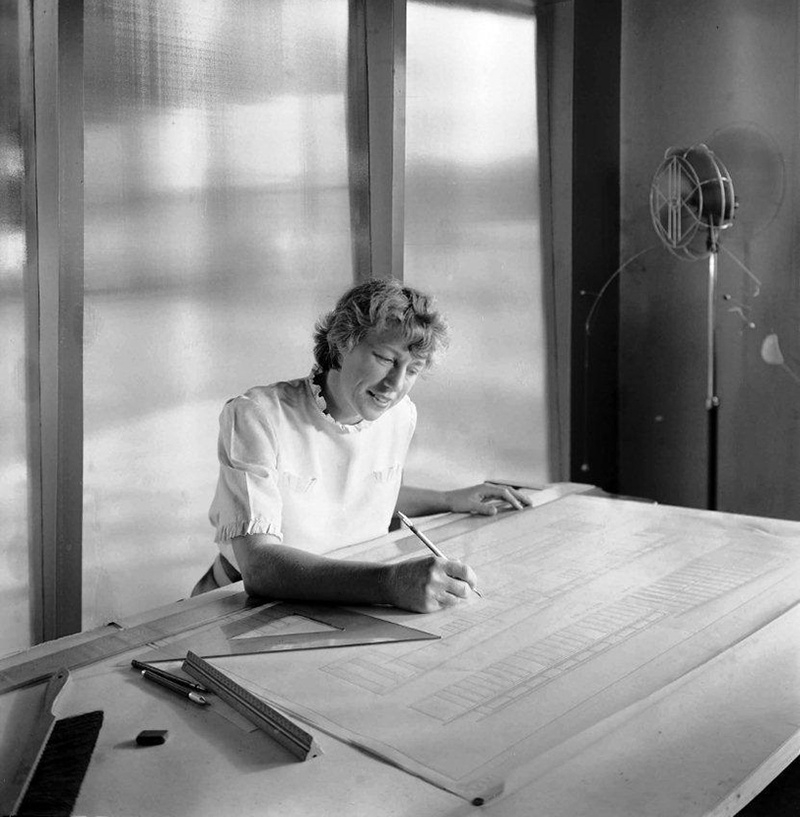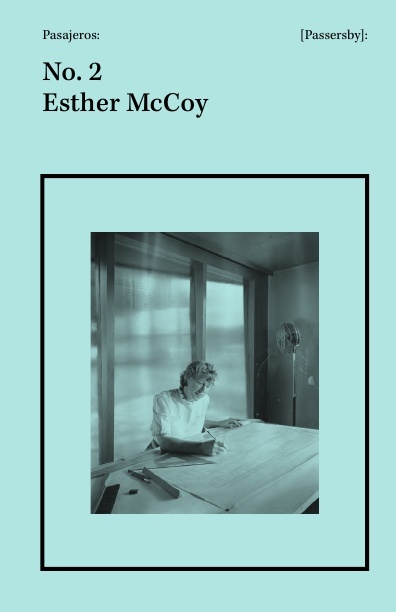
The second edition of the Passersby series focuses on the American writer and architecture critic Esther McCoy (1904-1989) and on the country that she saw during her travels to Mexico in the 1950s. The peculiar Mexican modernist language that McCoy observed in emblematic buildings like those of the Ciudad Universitaria (University City) and the residential area Jardines del Pedregal profoundly influenced her way of relating to architecture. In a way, one could say that the pairing of the international style and regional references that McCoy described in her writings for widely circulating publications like Arts and Architecture and the Los Angeles Times had an impact on the development of Californian architecture and design during that time period.
Passersby 02: Esther McCoy investigates this flow of references and ideas between Mexico and California; international style and popular styles; Luis Barragán and Rudolph Schindler; Clara Porset and Richard Neutra, through archival material like manuscripts, photographs and audio recordings from the McCoy archive at the Smithsonian Institution. The exhibition also emphasizes McCoy’s extended stay in Cuernavaca and presents some of the fictional texts that she conceived there. Her way of writing in this phase of her life not only makes direct reference to the sociopolitical setting of Cuernavaca during those years, but also reflects the important relationship she forged with the American novelist Theodore Dreiser in the early years of her career as a writer.
The exhibition also presents the work of contemporary artists who question Mexico’s modernist language during that period and who simultaneously reflect the invisible flow of ideas between artists and the contexts where they develop.
The Passersby series consists of biographical and documentary-style micro-exhibitions focused on historical figures from abroad who have passed through Mexico and influenced the development of artistic discourse in the country. In close dialogue with the documentary component of the Passersby series, the exhibitions include works by contemporary artists whose own reflections run parallel to the themes explored in each exhibition, in order thus to offer a contemporary interpretation of these important historical figures’ passage through Mexico.
Museo Jumex thanks the support of Galería Labor, Eduardo Prieto De la Lama and Archivo Clara Porset. Centro de Investigaciones de Diseño Industrial, Facultad de Arquitectura. UNAM.
Organized by: José Esparza Chong Cuy and Rodrigo Ortiz Monasterio.
Viridiana Zavala, Curatorial Assistant, Museo Jumex.







